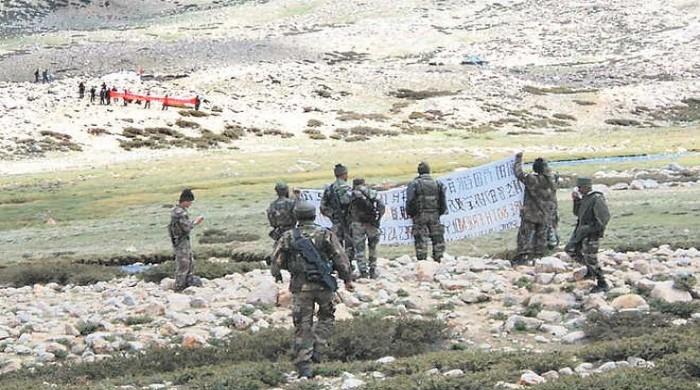
Chinese media said Tuesday a variety of advance weapons fit for high altitude combat had been deployed by Beijing in the western region amid sour relations with India after the violent Ladakh face off on June 16 left 20 soldiers of New Delhi dead.
The move came as India continued to move forces and hold drills amid border tensions between the two countries Global Times a top Chinese newspaper that comments on international issues from a nationalist perspective said in its report.
Global Times however, stressed that the deployment had come before the latest consensus reached by both countries on demescalating border tensions as the two sides have now agreed on the disengagement of front line soldiers.
The weapons including the PHI 03 and PHL 11 self propelled multiple rocket launcher systems PCL 181 vehicle mounted howitzers HJ 10 anti tank missiles towed 35mm anti aircraft guns, Type 15 light tanks and Z 10 attack helicopters were deployed to Northwest China's high-altitude desert regions and Southwest China's Qinghai Tibet Plateau according to several reports by China Central Television over the past week.
These weapons are very useful at high altitudes as many are specially designed for plateau operations with the lack of oxygen in such regions taken into account, the publication added.
It further quoted an Indian media report as saying New Delhi recently held drills featuring aircraft including Apache attack helicopters at a forward base near the Line of Actual Control (LAC).
The weapons deployed by Beijing were carefully selected to best suit high-altitude warfare and combat potential enemies' weapons of choice, the publication said, quoting a Chinese military expert.
Indian government sources had said Monday China began pulling back its troops from along its contested border, following a clash between the two countries last month in which 20 Indian soldiers were killed. Troops had fought for hours with rods and clubs on the night of June 15, with some falling to their deaths in the freezing waters of the Galwan river in the western Himalayas.
On Monday the Chinese military was seen dismantling tents and structures at a site in the Galwan valley near to where the latest clash took place, said the Indian government sources who declined to be identified as they were not authorized to speak to the media.
The sources had mentioned that vehicles were seen withdrawing from the area, as well as at Hot springs and Gogra two other contested border zones.
India's national security adviser Ajit Doval and Wang Yi one of China's top diplomats had a frank and in depth exchange of views on Sunday regarding the border, according to briefing notes by both countries released on Monday. Both sides said they had agreed to a significant disengagement of troops.
India's note had also said both sides had agreed to respect the existing LAC reflecting positions along the contested section of border. This reference was not included in Beijing's note on the meeting.
In response to a question on whether China had moved back equipment in the Galwan valley, Chinese foreign ministry spokesperson Zhao Lijian had said both sides were taking effective measures to disengage and ease the situation on the border. We hope India will meet China halfway and take concrete measures to carry out what both sides agreed to, continue to closely communicate through diplomatic and military channels, and work together to cool down the situation at the border, Zhao had told a news conference on Monday.
No comments:
Post a Comment
Please do not enter any spam link in the comment box.